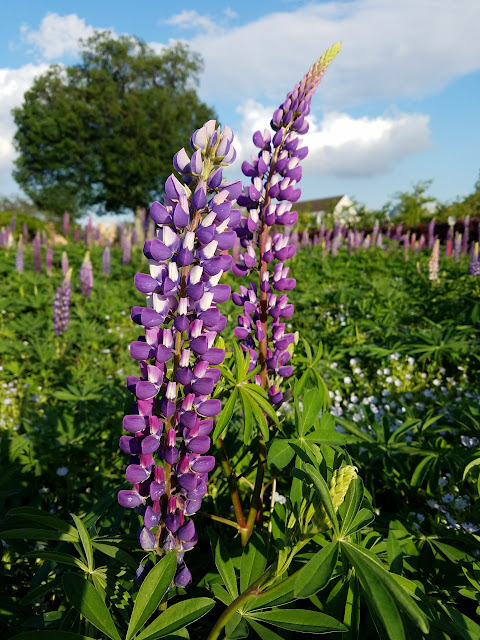Edit 9 October 2019: Updated prices to reflect the increase in Japan's national sales tax.
Previously on Sekai Ichi, I went on a tour to visit flower parks in the Kanto region. We visited the Hitachi Seaside Park and the Ashikaga Flower Park. Due to factors beyond our control, namely that some of their more famous flowers were beyond peak bloom faster than normal, our tour guide threw us a bone. She replaced some of the time we would have spent elsewhere with an additional stop, at the Tobu Treasure Garden (東武トレジャーガーデン, Tōbu Torejā Gāden). It is a smaller, more intimate park than the other two we visited. It certainly seems smaller when you look down on the central, hedge-lined corridor, but cross over to the right...
...and the park opens up to a hilly clearing. And... what could this be?
Now that's more like it! The nemophila flowers we had missed at Hitachi Seaside Park were out in force here! Granted, it was still past peak bloom, but closer to it -- and with weather I could actually admire them in. Compared to Hitachi, this park is located more inland, in Gunma prefecture, so it's likely that higher elevations and cooler weather offset floral blooms a few days compared to the coastal regions.
There are many other colours on display in this garden besides blue. Here is a mound of purple flowers whose species currently escapes me.
Another hill was topped with young snapdragon flowers.
They also have a hill here which they cover with pink phlox moss, but that was all gone by the time we arrived. I was set to see more of that in the Fuji Five Lakes, so that cast some doubt as to how far along in their lifecycle they would be... but I'll leave that as a surprise for you readers...!
In the middle of the hilly garden, there is a raised platform topped by this copper tea-kettle. It was donated by Morin-ji (茂林寺), a Buddhist temple nearby, to serve as a good-luck charm.
Closeup of a pink rose...
...and a bunch of orange roses.
The most distinguishing feature of this park is the chapel, the St. Peter and Paul Church, which sits in the front corner. The staff says it was transported all the way from Paddington, England which, if I'm looking up the right place, is a district of London.
The chapel comes complete with a pipe organ and stained-glass windows depicting various saints, which didn't come out so clear in this photo. The rose window up above is a traditionally English touch. And yes, you can arrange to hold your wedding here.
As if to remind me of where I actually was, a small pond on the entrance plaza was populated with plenty of small carp (鯉, koi), whose red-on-white spots reminded me of the Japanese flag.
Finally, my sign-off selfie, taken when we all returned to our starting point in Shinjuku. Here I am to the right, next to my grandmother, and a couple from Hawaii who joined us for the day. We walked together on our way to Shinjuku Station before parting ways to find dinner in the station's department stores. After Nana and I supped, we returned to our hotel to rest up before our next day's activities. That would be a tour of the Fuji Five Lakes, next time on Sekai Ichi!
Hours: Open from 9:00 AM to 5:00 PM from April to June, or from 10:00 AM to 4:30 PM from October to mid-November. Closed from July to September, and from mid-November to March.
Costs: Varies from ¥500 to 1,000 depending on the season and the condition of flowers within the park.
Address: 1050 Horiku-chō, Tatebayashi-shi, Gunma-ken 〒374-0066
Access: From Tobu's Asakusa Station in Tokyo, take the Ryomo limited express to Tatebayashi Station (TI10, 65 minutes, ¥1,960 reserved), followed by a 10-minute taxi drive (about ¥1,500). There are one or two Ryomo trains per hour.
Or, take a local train on the Tobu Isesaki (TI) line to Morinji-mae (TI09, 110 minutes, ¥910), followed by a 15-minute walk. Section Express trains in the mornings and evenings make the journey directly; otherwise, you will need to transfer at a station in-between, i.e. Tobu Dobutsu-koen (TS30).
Website: (Japanese)














